This post is a follow up to a post I published about 2 years ago:
https://ecency.com/hive-140635/@bigorna1/an-attempt-to-cure-our
 ‘charcoal disease’ (Carvão do Entrecasco in Portuguese) is a disease caused by the Biscogniauxia mediterranea fungus that effects mainly Cork Oaks (Quercus suber) but also the Pyrenean oak or also known as Spanish Oak (Quercus pyrenaica) in our area, but can effect other Oak varieties as well.
‘charcoal disease’ (Carvão do Entrecasco in Portuguese) is a disease caused by the Biscogniauxia mediterranea fungus that effects mainly Cork Oaks (Quercus suber) but also the Pyrenean oak or also known as Spanish Oak (Quercus pyrenaica) in our area, but can effect other Oak varieties as well.
Biscogniauxia mediterranea is an endophytic fungus of healthy cork oak trees that turns into a pathogen in trees weaken by environmental stress> nature.com
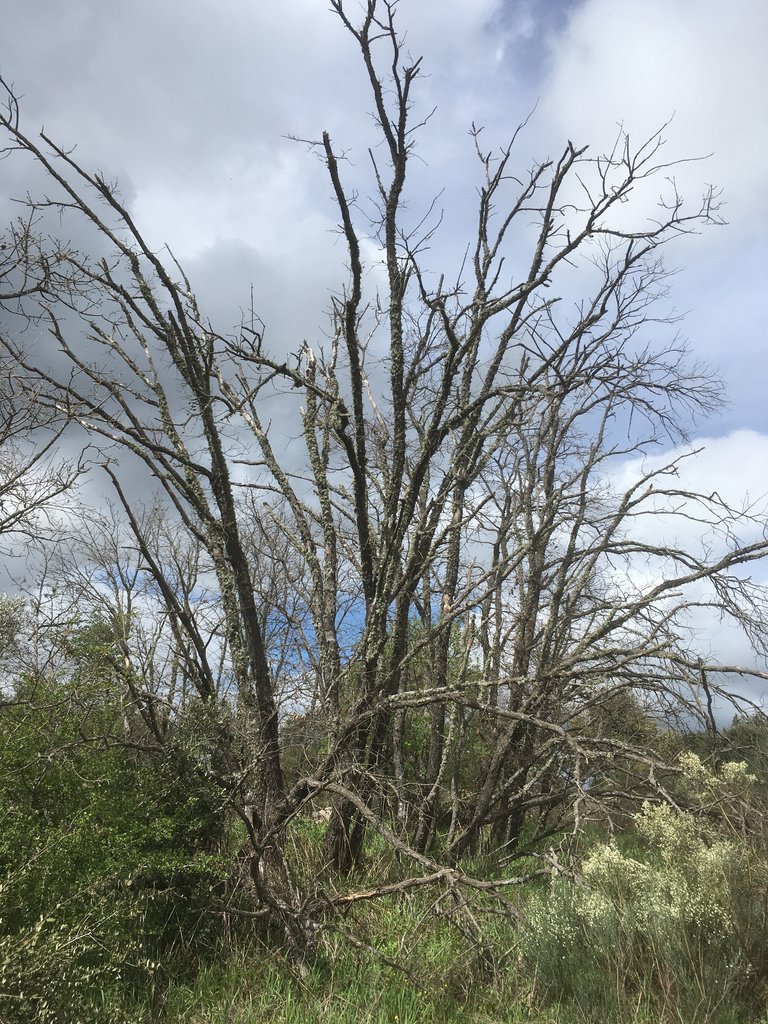 one of our biggest Pyrenean oak that died due to the fungi. it slowly bends down under its own weight and sheds its dead branches to the ground.
one of our biggest Pyrenean oak that died due to the fungi. it slowly bends down under its own weight and sheds its dead branches to the ground.
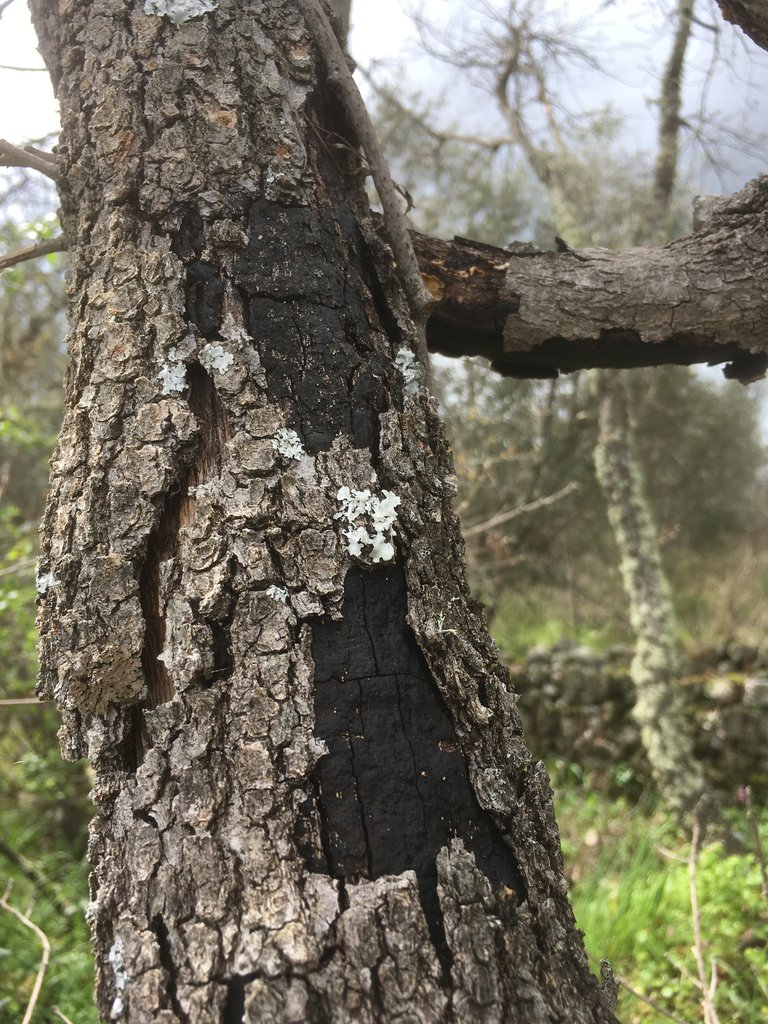 looking closer this is what it looks like. the fungi settles between the tree and its bark and slowly spreads until eventually killing its host.
looking closer this is what it looks like. the fungi settles between the tree and its bark and slowly spreads until eventually killing its host.
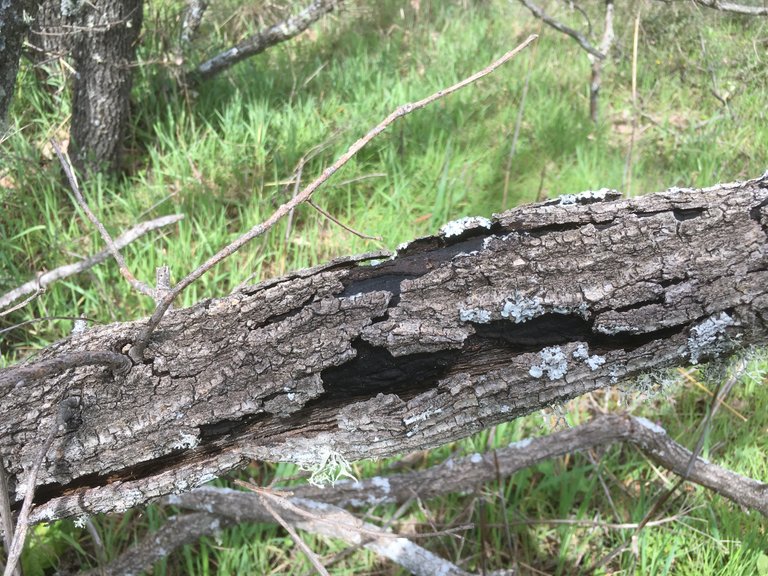 as the bark dries and cracks open it is evident what the cause is. can be hard to spot in early stages, until the black surfaces start to emerge.
as the bark dries and cracks open it is evident what the cause is. can be hard to spot in early stages, until the black surfaces start to emerge.
the identification is easy due to this and hence the name ´Charcoal disease´.
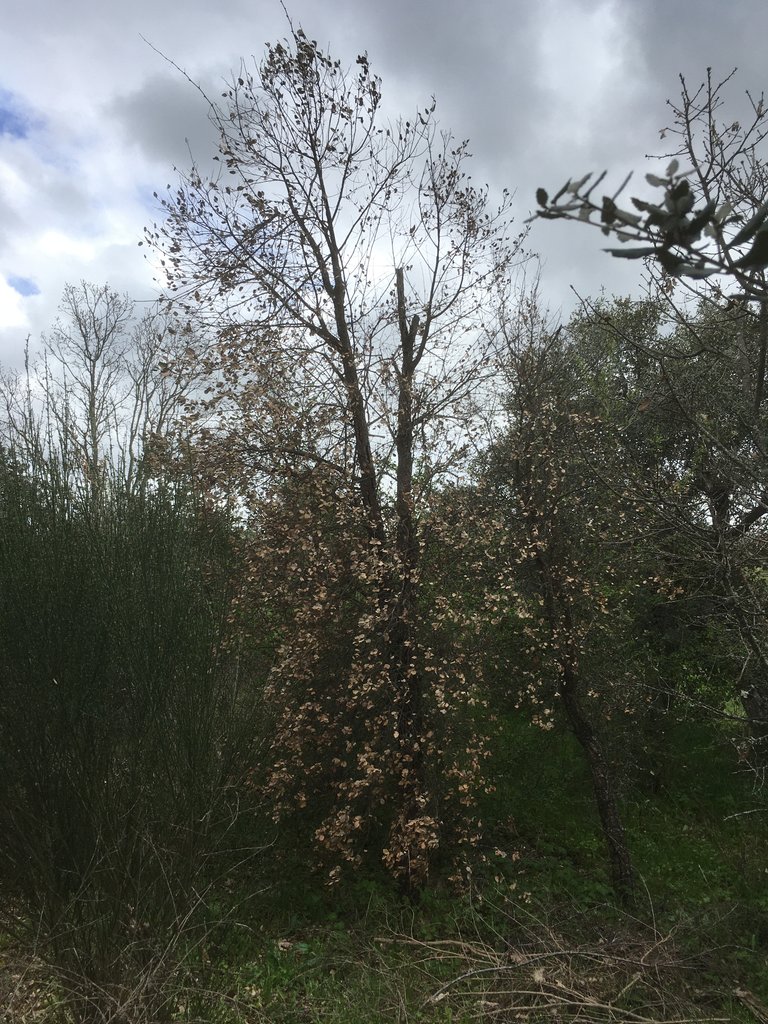 this is what it looks like for the Cork Oaks (Quercus suber). young trees of 3-4 years of age just completely dry up suddenly and die.
this is what it looks like for the Cork Oaks (Quercus suber). young trees of 3-4 years of age just completely dry up suddenly and die.
 in a closer examination, the cork bark cracks open as it dries out and the black surface becomes visible.
in a closer examination, the cork bark cracks open as it dries out and the black surface becomes visible.
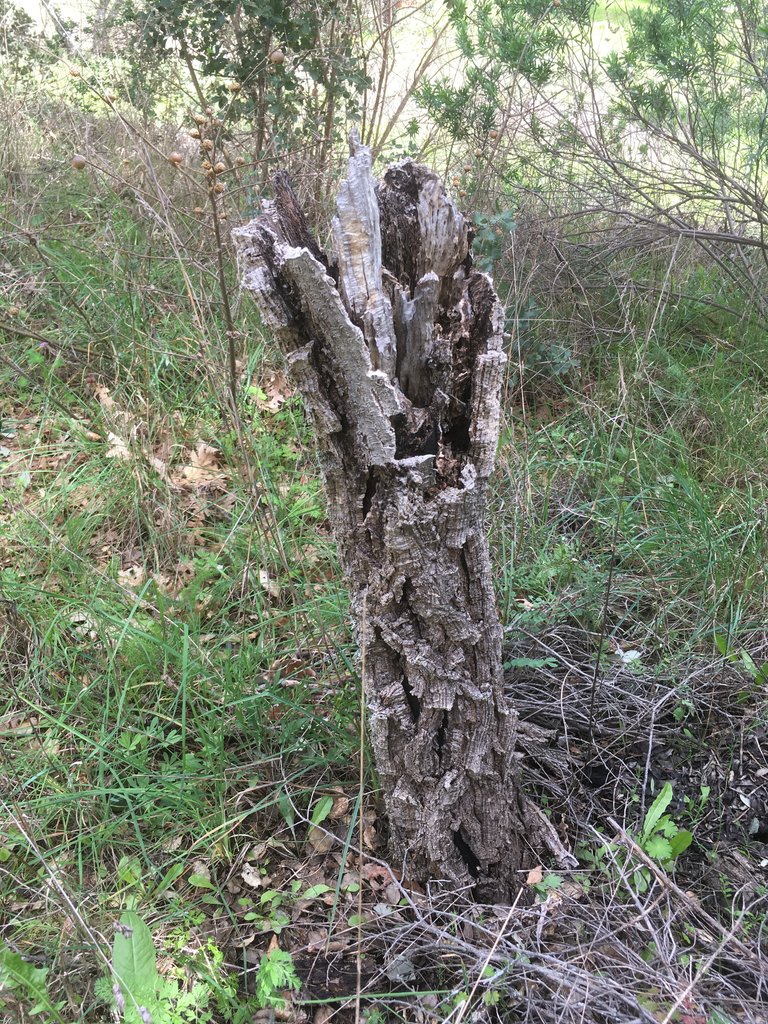 the remains of yet another cork oak consumed by the disease.
the remains of yet another cork oak consumed by the disease.
Observations
from the years I have been observing the disease and I can conclude the following:
· in the case of Cork Oaks, younger trees are more prone to death from infection, while older stronger trees, even though show visible extremities infected, manage to hold it from spreading to thicker branches and trunks.
· some multi trunked Cork Oaks can have one part (one trunk) dead while the rest shows normal health.
this could be due to cardinal orientation perhaps..? still not enough data on this.
· in the case of the Pyrenean oak, I have seen older and very large trees effected and dead due to infection. even though I have seen younger trees die also, I could not clearly determine that the fungi was the cause.
· we have been introducing Portuguese Oaks (Quercus Faginea) which is not very naturally present in our area into our farm as it has been shown to help hold back the spread of the disease. there are about 20 of them at the moment and we keep adding more of them with each season.
· my attempts in treating infected trees have shown very limited results and it normally takes the removal of the infected dead trees and burning their remains in order to try and contain the spread.
thank you for stopping by 🙏
wishing us all a peaceful weekend.